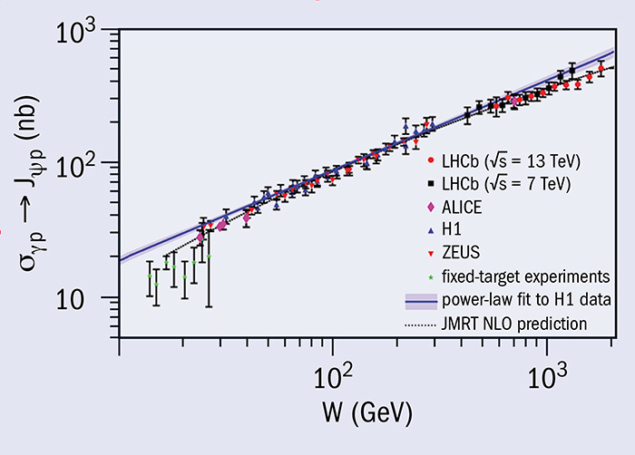
Four years ago, LHCb measured the central exclusive production (CEP) of J/ψ and ψ(2S) mesons at a centre-of-mass energy of 7 TeV (CERN Courier March 2014 p7). In CEP, two incoming protons emerge intact from the collision, with a central system created by the fusion of two propagators that do not contain colour (e.g. photons or pomerons). This results in an unusual final state for hadron collisions with just a few particles detected: in the case of J/ψ and ψ(2S) mesons, it leads to the characteristic signature of two muons from the meson decay and no other observed activity in the event.
A major background to this process is due to collisions where the protons dissociate but the remnants travel close to the beamline and thus remain undetected. To address this, the LHCb collaboration designed and built a new detector called HeRSCheL, which was installed at the beginning of 2015 in the LHC tunnel. It consists of 20 square plastic scintillators approximately 30 cm wide placed just outside the vacuum pipe at distances up to 114 m from the interaction point. Whilst LHCb is fully instrumented in the pseudorapidity region 2 < η < 5, HeRSCheL significantly extends the sensitivity to 5 < | η | < 10 and therefore improves the precision with which the experiment can observe CEP processes.
LHCb has now taken advantage of the extra reach to measure J/ψ and ψ(2S) CEP in 13 TeV proton–proton collisions. By including HeRSCheL, backgrounds have been reduced by a factor of two compared to the measurement at 7 TeV. Furthermore, by comparing events with and without activity in HeRSCheL, a much better understanding of those backgrounds has been achieved, resulting in an improved precision.
The figure shows the derived photoproduction cross section for J/ψ mesons as a function of the proton–photon centre-of-mass energy for LHCb data at 7 and 13 TeV, with good agreement observed compared to theoretical predictions. Also shown are ALICE results in proton–lead collisions and HERA (H1 and Zeus) results at lower energies. The shaded band is a power-law extrapolation of the HERA data, which is seen to be inconsistent with the data at the highest energies.
Measurements of the CEP process can be used to test perturbative QCD predictions as well as to improve our understanding of the distribution of gluons inside the proton. This new measurement paves the way to future CEP analyses at LHCb and beyond, not only using proton–proton but also heavy-ion collisions.
Further reading
K C Akiba et al. 2018 J. Instrum. 13 P04017.
S P Jones et al. 2013 J. High Energy Phys. 11 085.
LHCb Collaboration 2018 LHCb-PAPER-2018-011.








